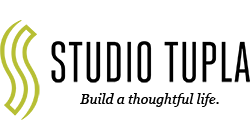Side Rails and Stretchers
The work this week (and next) on the Upprätt 2 armchair is especially challenging because it involves making and fitting the side seat rails and side stretchers, which have compound angle cuts at the ends. These ends need to match up with the curved faces of the front and back leg profiles.
The first step was to determine the correct angles for the cuts, then to set up several jigs for the table saw that allow me to accurately set up each cut; one jig for the miters and four for the bevel cuts which are all different.
With the bevel-miters cut and the rails and stretchers cut to approximate length, I began cutting slot mortises for the floating tenons. Because the angle of the miter cuts is fairly extreme, a "live tenon" cut directly on the ends of the rails and stretchers would have the grain oriented in a way that produces a weak joint. The remedy for this situation is a separate floating tenon that connects opposing mortises cut in the legs and rails/stretchers.
Below, is the set-up for cutting mortises in the ends. The u-shaped trough holds the end grain face of the part perfectly vertical so that the mortise is cut perpendicular to that face and the jig is set parallel to the cutting bit.
Here's a better view of the cutting action.
The side parts are still in a bulky milled form. They'll stay this way until the front leg assembly is glued up and the final fitting of the side seat rails and stretchers has begun.
The image below shows the relationship between the traced outline of the parts and the cut mortises.
Next, I milled some of the same elm material to form floating tenons.
The fitting of the tenons, as with all hand work, requires a bit of care to achieve the proper shape and size.
One leg to go...
It's beginning to look like a chair. With the tenons fitted, I used the spokeshave and hand plane to add bevels to the front and back of the front legs.
Next is the process of making sure the angle cuts at the ends are accurate and that the parts are cut to the correct length. This requires that I be able to clamp up the assembly as if it were ready for glue-up.
Probably the most complex parts of this chair, the clamping cauls, won't even be in the finished piece. Below, you can see how the cauls are straight, curved, beveled, tapered and offset; a significant effort, but for a good fit and a seamless glue-up process it will be worth it! The best, most long-lasting joint, is one that is stress-free when it is at rest. This is one way to help achieve that. These particular cauls will allow me to apply a uniform clamping force that is axial in its relationship to the seat rails and stretchers.
Next time, I'll be making adjustments to the lengths of the side seat rails and stretchers as well as preparing the front leg assembly.
Hej då!
Craig










